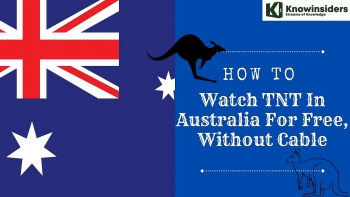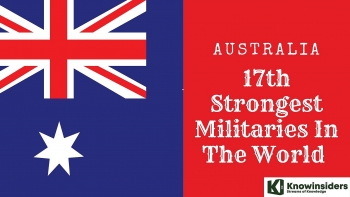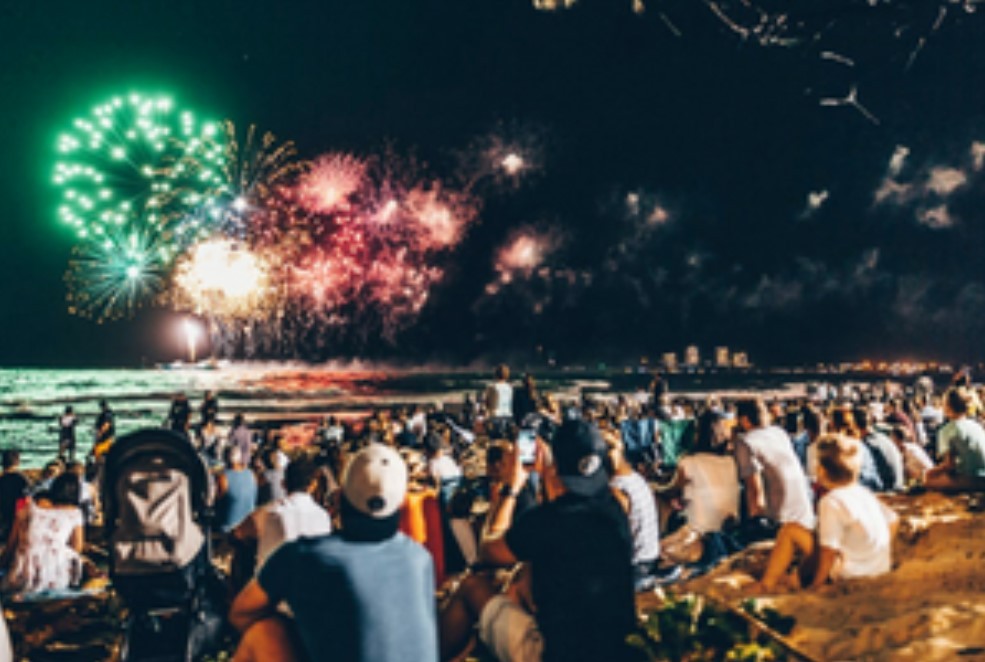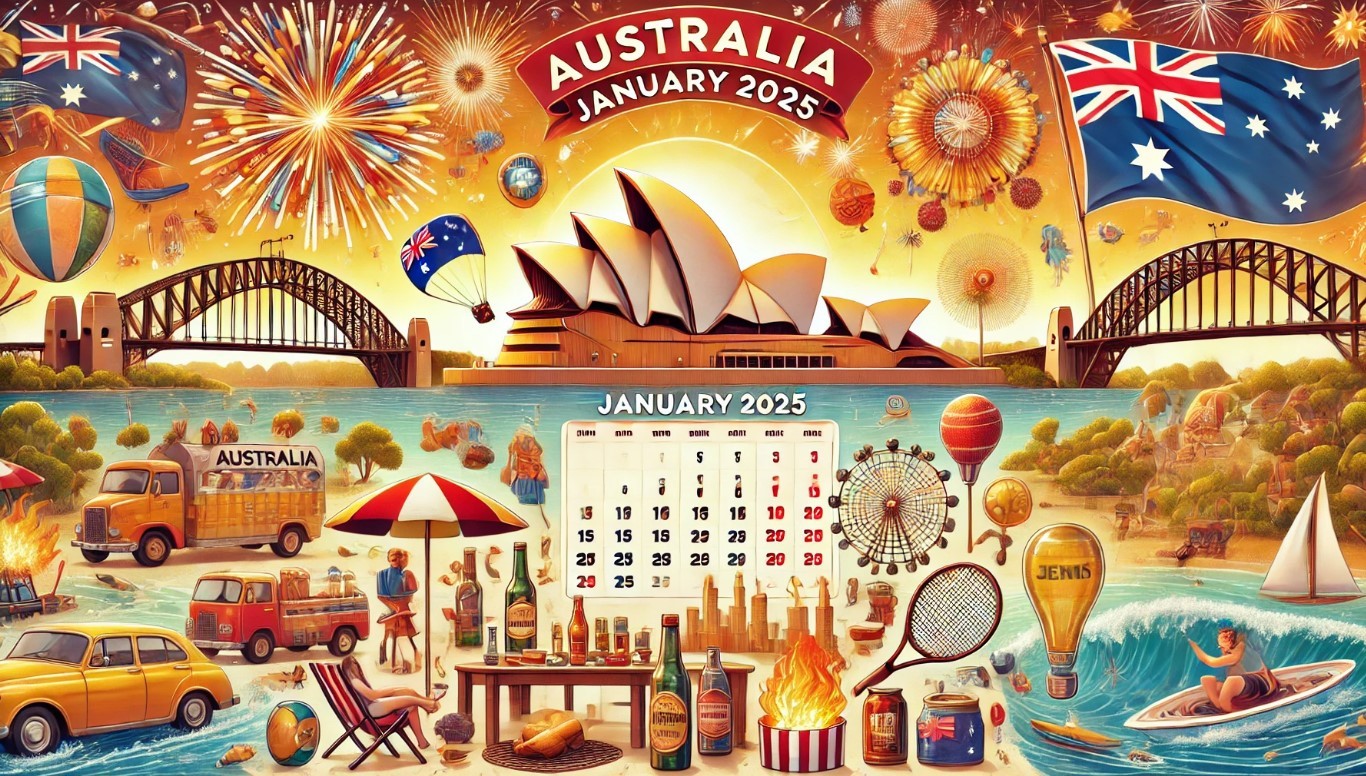What Is The Capital of Australia: History, Best Places to See and Facts
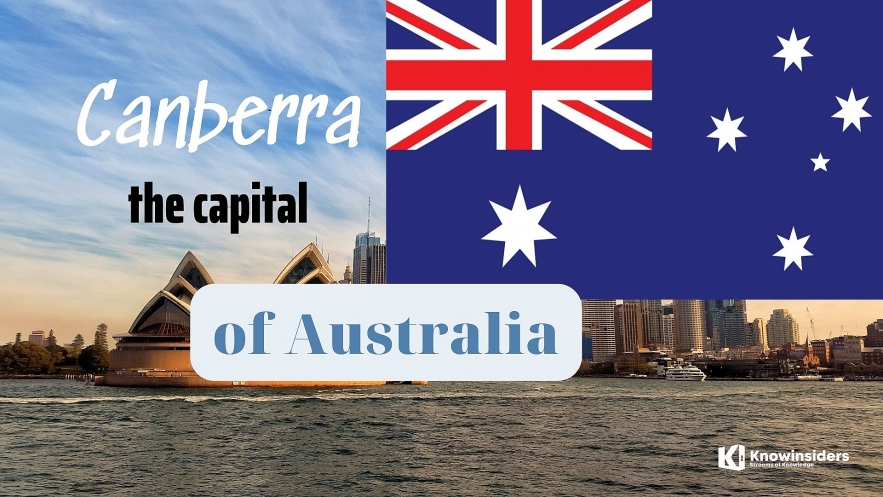 |
| Canberra is the capital of Australia. Photo: knowinsiders. |
What is the Capital of Australia?
Australia is one of those funny countries with a capital city that is not very well known or densely populated. Crammed with cultural treasures, Canberra, in the ACT (Australian Capital Territory), is the carefully crafted capital of Australia. It's no accident that the city lies between Sydney and Melbourne. The site of the capital was chosen as a compromise between these two rival cities in 1908.
How much do you know about Canberra? Let’s start with the basics, including history, best places to go and frequently asked questions and facts about the capital of the Australia.
*****
History of Canberra
According to Mother Earth Travel, Canberra's name comes from the Aboriginal word "Kamberra", meaning 'meeting place', apt for the city that became the nation's capital as a solution to the dispute between rivals Melbourne and Sydney.
Following the federation of Australia in 1901, years went by in the search for the future site of Australia's capital. Finally, in 1908, Federal Parliament declared that the capital would be in the Yass/Canberra district.
For over 21,000 years, this region had been home to the Ngunnawal aboriginal people. As part of their nomadic migrations, they regularly visited the area for corroborees and feasts. Archaeological evidence of their occupation can be found at Birrigai Rock shelter at Tidbinbilla Nature Reserve, at the Axe Grinding Grooves, at Tuggeranong Creek as rock paintings in Namadgi National Park and at other sites throughout the Australian Capital Territory.
European settlement, beginning in the 1820s, disrupted the thriving Aboriginal life-style. While much of their culture was lost, many continued to live in the area taking work on sheep stations.
Canberra derives its name from the first European settler's property, "Canberry", based on the aboriginal name for the area. The city centre of modern Canberra lies over the middle of this property.
The New South Wales Government Surveyor at the time, Charles Scrivener, selected this site for the future capital due to its commanding position within an amphitheatre of hills. His vision was that the flood plain of the Molonglo River could form an ornamental lake in the centre of the city site. This was ratified in 1909, and on 1 January 1911 the Australian Capital Territory came into existence. At this stage there were only 1714 persons living in the Territory, outnumbered slightly by horses, greatly by the 224,764 sheep, not to mention the kangaroos!
| NAMING OF THE CAPITAL The most important day in the history of Canberra is 12th March 1913, when it was officially named by the Governor-General's wife, Baroness Denman, in a ceremony that took place on what is now known as Capital Hill. This day is remembered on the second Monday of March each year, when all residents of the Australian Capital Territory celebrate the aptly named 'Canberra Day'. |
The international competition to design Canberra was launched on 24 May later that year and, from some 137 entries, Walter Burley Griffin's design was awarded first prize.
On 12 March 1913, the wife of the Governor General, Lady Denman, officially named Canberra as the capital of Australia and three foundation stones were laid into place at the base of the commencement column: they can still be seen in the lawn of Parliament House.
Just as construction of the city got underway, Canberra’s development was severely delayed by both world wars and the Great Depression. Following the Second World War, Canberra began to grow and in 2020 was home to more than 400,000 people.
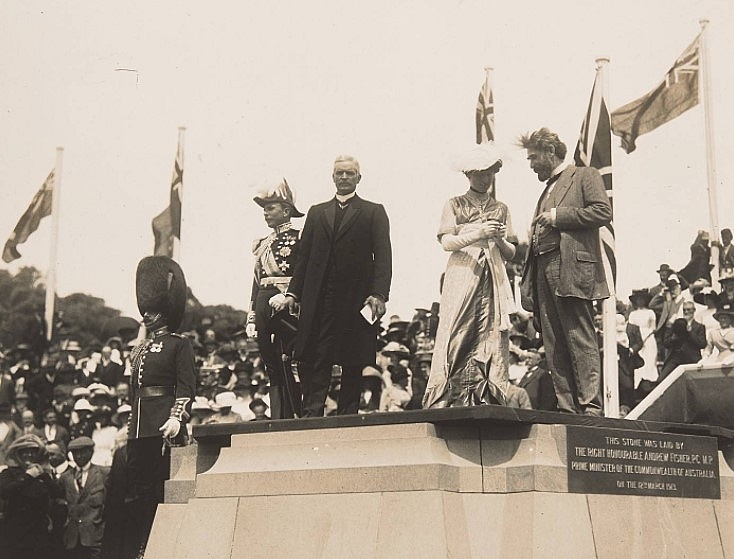 |
| The official ceremony on Capital Hill to mark the commencement of work on Canberra, 12 March 1913, with (from left) Governor-General Lord Denman, Prime Minister Andrew Fisher, Lady Denman and Minister for Home Affairs King O’Malley. National Museum of Australia. Photo: nma.gov.au. |
Best Places to See in Canberra
A trip to the capital wouldn't be complete without seeing the following attractions:
New Parliament House
According to Planetware, the final fulfillment of architect Walter Burley Griffin's vision for Canberra in 1912, New Parliament House is a marvel of modern architecture. The boomerang-shaped structure nestles comfortably into Capital Hill and was designed to replace the Provisional Parliament House at the base of the hill, now known as Old Parliament House.
A New York-based architect won an international competition for the design of the new building, and on May 9, 1988, the Queen officially opened Parliament House. The date in May was chosen to commemorate the first meeting of Federal Parliament in Melbourne in 1901 and the first meeting of Parliament in the Old Parliament House in 1927.
From the expansive grassed walkway, which forms the roof, you can enjoy panoramic views of Canberra and see how Parliament forms the central focus of the city's street layout.
Architectural highlights of the building include the two huge circular walls, composed of granite, which mirror the curves of the hill; the towering 81-meter flagpole; and the Ceremonial Pool. In the foyer, 48 columns of illuminated greenish-gray marble create the impression of a eucalyptus forest. Throughout the public spaces, exhibits display important documents (the Magna Carta is a highlight) and retrace important events in Australian history.
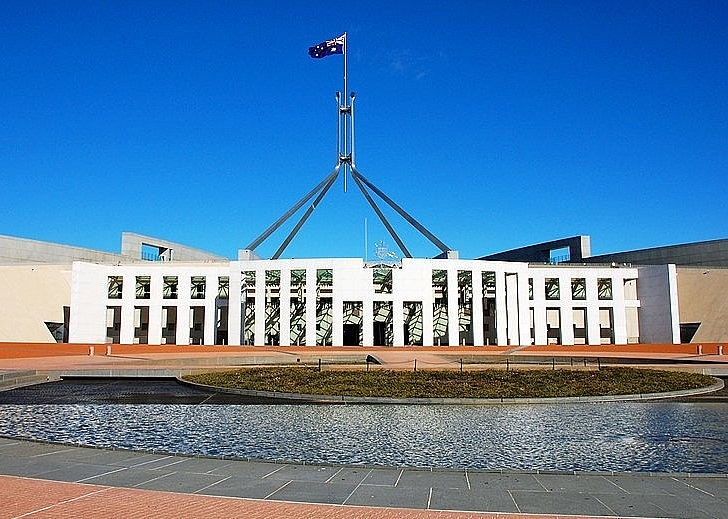 |
| New Parliament House. Photo: planetware.com. |
National Museum of Australia
On a peninsular jutting into Lake Burley Griffin, the National Museum of Australia spotlights the nation's social history. The contemporary building itself is a conversation piece, with beautiful lake views. Inspired by a jigsaw, it was intended to underscore the interconnected stories that helped shape the nation.
A major theme of the exhibits is the cultural history of Indigenous Australians. Other highlights include exhibits on the Gold Rush, Australian industry, clothing, and migration. Children will also find a few interactive displays to keep them busy.
Address: Lawson Crescent, Acton Peninsula
Lake Burley Griffin
According to thebrokerbackpackers.com, lake Burley Griffin was named in honour of the architect who designed Canberra. Although the city’s original plan dates back to 1912, it wasn’t actually completed until 1958. Nowadays, it’s loved by both locals and tourists alike for its serene atmosphere and the wealth of activities you can do on and around the lake. In its centre, you’ll find several of the best places to visit in Canberra (including some that are on this list), dotted across 6 man-made islands. You’ll also be impressed by the 147m high Captain Cook Memorial Jet fountain!
Six islands lie at its center, the largest of which is Aspen Island, home to the National Carillon, a gift from the British government with 55 bronze bells.
Sprinkled around the lake are some of Canberra's top things to see and do, including the National Gallery, National Library, Questacon, and National Museum.
Standing on the shores of the central basin, you can see the Captain Cook Memorial Jet, a 147-meter-high fountain inaugurated in 1970 on the 200th anniversary of Cook's discovery of Australia. A globe sculpture depicting the path of Cook's voyages lies on the shores of the lake at Regatta Point.
National Gallery of Australia
Another not-to-be-missed Canberra attraction, the National Gallery of Australia is a world-class establishment, striving to enhance and deepen the public’s understanding of visual art. Free to visit, and with over 100,000 inspiring and innovative pieces from across the world and arguably the best collection of Australian and indigenous art in the country, the National Gallery should be on the top of everyone’s list, whether they’re into art or not.
Australian National Botanic Gardens
According to theculturetrip, on the lower slopes of Black Mountain, the Australian National Botanic Gardens are home to an extensive collection of native plants from across the country, including orchids, gum trees, ferns, fungi and plants that are threatened in the wild. As well as providing a serene oasis to enjoy, the plants are also used for extensive biology and plant classification by local scientists, and the gardens are as educational as they are beautiful.
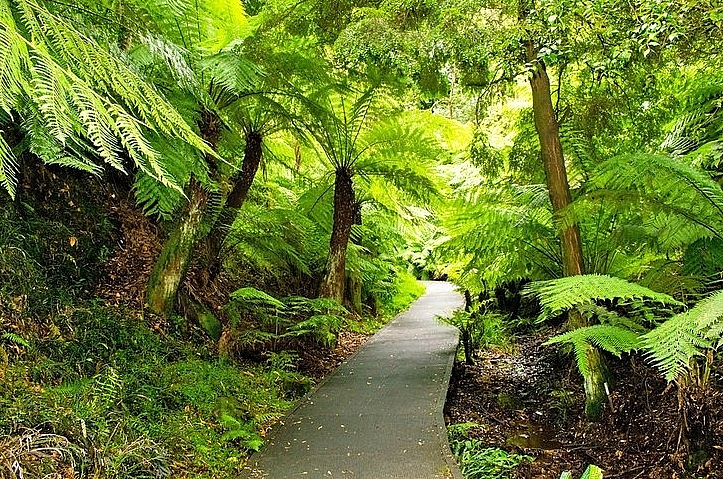 |
| Rain Forest Gully in the Australian National Botanic Gardens. Photo: planetware. |
What to do there: You can even take a ¾ hour bus tour (don’t worry, it’s air-conditioned). This should tell you just how big the gardens are! However, it’s just as rewarding to visit the gardens and discover them for yourself on foot. They’re split up into sections, and you’ll get to see some of the different landscapes Australia is known for. For example, the rainforest gully is lush and green, and you may even be lucky enough to spot a water dragon. The Red Centre is the complete opposite – where you’ll get an idea of the Outback and its grasslands!
Black Mountain Nature Park
If you really liked the Australian National Botanical Gardens but haven’t managed to spend the whole day there, this is a great option for your afternoon. The Black Mountain Nature Park’s views rival those of the Mount Ainslie Lookout and enable you to get out in the bush! Although you’ve all heard the horror stories of venomous snakes and spiders, you’re more likely to catch a view of native birds here. This is also where you’ll find the Australian Institute of Sport.
 |
| Photo: http://thingsplan.com. |
We’d definitely recommend taking a walk through the bush and spotting some wildlife. Don’t forget your camera and binoculars so you can really see it up close! The Black Mountain Tower deserves a place on your Canberra itinerary too. Not only does it offer fantastic views across the city, it’s also one of the best places to eat in Canberra. The revolving restaurant at the top of the tower certainly is a once-in-a-lifetime experience! The Black Mountain Nature Park is one of the best places in Canberra to escape into the wilderness for the day!
National Zoo and Aquarium
Australia's only combined zoo and aquarium, this privately owned venture is a hit with families and anyone who loves animals. It's only five minutes from the city center.
The National Aquarium displays a wide range of marine life, from the tiny denizens of the reefs to huge sharks.
In the neighboring zoo, you can view all the important species of Australian fauna, as well as exotic species as such as lions, tigers, cheetahs, bears, and more. The animal encounters are extremely popular and allow visitors to go behind the scenes and interact with a range of exotic creatures. You can meet a meerkat and get up close with cheetahs, giraffes, sun bears, and rhinos, among other animals at this popular Canberra zoo.
Address: 999 Lady Denman Drive, Western Creek, Yarralumla
Snowy Mountains
Wondering about places to visit near Canberra in winter? You can ski the slopes of some of Australia's best ski resorts about a two-hour drive south of Canberra. Rising to a height of 2,228 meters, the rugged Snowy Mountains host top resorts, including Perisher, Thredbo, Smiggin Holes, Charlotte Pass, Guthega, and Mount Blue Cow.
But you'll find plenty of things to do in the Snowy Mountains year-round. In the summer, the region offers fabulous hiking, horseback riding, water sports, and fishing.
 |
| Snowy Mountains. Photo: planetware.com. |
| State: Australian Capital Territory (ACT) Country: Australia Quick Facts: Major Industries: federal government, public administration, manufacturing, agriculture, education, tourism, IT Electricity: 240 volts, 50Hz, angled three-pin plugs Time Zone: GMT+10 Country Dialing Code: 61 Area Code: 2 Orientation: Canberra is the capital of Australia and is located in the southeastern part of the country. It is the largest inland city in Australia and lies 300 kilometers southwest of Sydney and 650 kilometers northeast of Melbourne. |
Australian War Memorial
Like many other countries, as thecrowdedplanet reported, Australia too had its share of wartime victories and losses. The Australian War Memorial is dedicated to the lives Australians lost during all wars Australia has ever participated in.
The museum was planned at the end of WW1, but construction didn’t begin until 1941, with subsequent additions remembering the role played by Australia in all recent conflicts. Sections worth visiting include the Commemorative Area, with the Pool of Remembrance and the Hall of Memory, housing the Tomb of the Unknown Australian Soldier. It’s a somber place where the atmosphere plays an important role in the experience.
Don’t miss the Last Post Ceremony each day at 4.55 PM, just before the museum closes, when the Australian anthem is played followed by the story of an individual fallen soldier, and then the Last Post played on the bugle. It might be a difficult place to visit for some, but it’s a small price to pay to understand Australia’s history and the way it helped shape the world.
Interesting Facts about Canberra
If you are embarking on an Australian tour, you would be interested in some cool facts about Canberra. We summed up some interesting facts about Canberra, according to pavilioncanberra.com, countryaah.com:
While all the big million cities are on the coast, Canberra lies a little inland between the two largest, Sydney and Melbourne.
The location is not accidental. When the country was planning to get a new capital in 1908, the idea was to build a whole new city just for this purpose. Area was provided between the two main cities (though it is closest to Sydney). In 1913 it was given the name Canberra (“Canberra” comes from the Aboriginal word “Kamberra”, which means “meeting place”).
Not only is the city completely surrounded by nature (in the “bush” as it is located), but also in the center, from the beginning, space was set aside for and built large park areas with natural vegetation and trees.
Canberra is a beautiful city with large greenery. Often referred to as “Australia’s best-kept secret” (few tourists know the city and all it has to offer before traveling to the country).
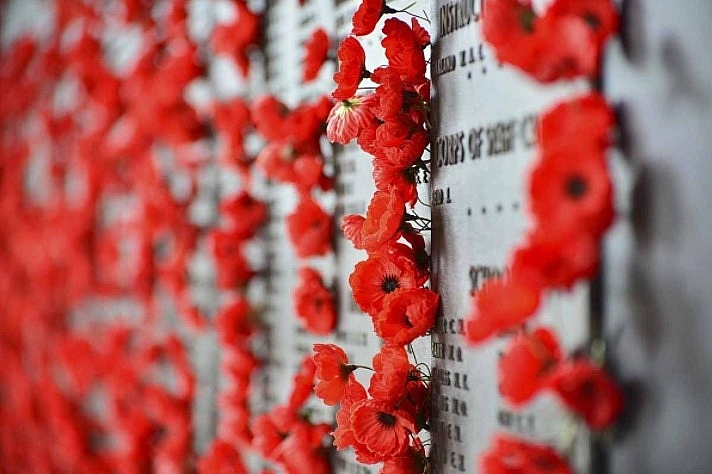 |
| Poppies at the War Memorial. Photo: thecrowdedplanet. |
Canberra has 3 sister cities: The Japanese city of Nara, Beijing in China, and Wellington in New Zealand
Established to bolster culture, community, education, and encourage trade and tourism between nations, Sister city relationships have become an important part of Canberra’s rich culture and history.
Nara, the capital of Nara Prefecture in Japan became Canberra’s first sister city in 1993, followed by Beijing, China in 2000, and most recently Wellington, New Zealand in 2016.
As a celebration of friendship and goodwill, Canberra hosts the Nara Candle Festival every year at the Canberra Nara Peace Park! Expect a line up of live entertainment, cultural performances, and a variety of food and market stalls.
Canberra’s suburbs are named after ex-Prime Ministers
From Deakin, Watson, Fisher, Cook, Hughes, Curtin and Fadden, Canberra has a tradition of naming its suburbs and streets after past Prime Ministers. Most recently, Whitlam, a suburb in the new Molonglo Valley, was named after the late prime minister Gough Whitlam.
Meanwhile, as a curveball to this list and a testament to a classic Aussie obsession, Callister Street in Theodore pays tribute to Australian Chemist Dr Cyril Callister, inventor of the Vegemite.
Since 1987, Canberra has been the venue for Australia’s biggest car festival
"Summernats”. The festival set the audience record in 2017 with 120,000 visitors (not bad for a city with 400,000 residents). Arranged every year in time around New Year.
It’s one of the only places in Australia where you can go on a Hot Air Balloon ride
Blessed with wide open skies and a scenic landscape, Canberra has developed a love for hot air balloon riding. So much so that Canberra has a dedicated festival just for it!
Free to attend, the Canberra Balloon Spectacular is part of the annual Enlighten Festival. Spectators can view hundreds of colourful hot air balloons gently floating high above the capital. To experience this quintessentially Canberran adventure, you can book hot air balloon flights from Balloon Aloft or Dawn Drifters.
Canberra has a NASA base - Canberra Deep Space Communication Complex
Located at Tidbinbilla, the Canberra Deep Space Communication Complex is one of three stations in the world. The other two are based in Madrid, Spain and Goldstone, California. The station provides continuous, two-way radio contact with spacecrafts exploring our solar system and beyond. Its antennas especially play a pivotal role in tracking NASA's Voyager 1 spacecraft, which has now travelled beyond the Solar System!
Visitors can learn all about space exploration and the amazing advancements we have accomplished at the Canberra Space Centre - open 7 days a week, from 9am to 5pm. Here you can take in magnificent views of the largest antenna complex in the southern hemisphere, see a piece of the Moon that's over 3.8 billion years old, and discover astronaut food!
 |
| Batemans Bay as seen from above – Photo Credits Wikipedia/Graeme Bartlett |
Over 137 entries from 15 different nations pitched to design the city
In 1912, the Australian Government hosted a Federal Capital Design Competition to find a design for the nation's capital. They received a staggering 137 entries from all over the world, including Mexico, Sweden, South Africa, Paraguay, France and India!
Ultimately, the award went to American architect Walter Burley Griffin. A little known fun fact: His wife Marion actually did all the drawings of the design that was presented to the assessors.
Canberra’s secret tunnels and underground highways
It’s a known fact that beneath Canberra’s streets, you’ll find vast multi-level underground tunnels connecting many government buildings. But did you know that there are supposedly more secret passageways running beneath Lake Burley Griffin?
Secret tunnels, hidden passages and espionage has been whispered about in Canberra for decades. Numerous exposes and news articles have attempted to uncover the city’s secrets but none have found solid evidence - yet. Rumours have also long persisted about the Deakin Telephone Exchange being used for espionage purposes by secret agencies such as the NSA and FBI.
| Frequently Asked Questions about Canberra Explore nature and enjoy some stunning views at the incredible places to visit in Canberra: – Mount Ainslie Lookout – Australian National Botanical Gardens – Namadgi National Park What are the best places to visit in Canberra for outdoor adventures? Outdoor lovers will have a blast at these places in Canberra: – Mount Ainslie Lookout – Namadgi National Park – National Zoo and Aquarium Which places in Canberra can you visit during winter? Even when it’s cold outside, these places in Canberra are pretty cool to visit: – Black Mountain Nature Park – New Parliament House – National Museum of Australia |
|
TNT is one of the most famous American channels and is often watched all around the world. To learn more about how to watch the ... |
|
We lined up the 30 best movies that you (from Australia) can watch this year of 2022 on Hulu, including: Action, Thriller, Adventure, Sci-Fi, Documentary, ... |
|
For 2022, Australia is ranked 17 of 140 out of the countries considered for the annual GFP review. In the article below, we will learn ... |

